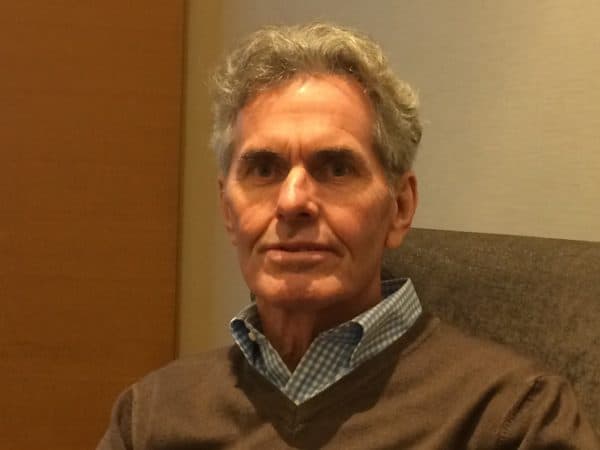Canada’s marijuana sector isn’t overvalued, says Emblem Corp’s John Stewart


Similarly, the meaning and cultural significance of today’s marijuana icons and stoner-culture symbols are eroding in Canada and other countries around the world. With the shedding of taboos, marijuana is clearly ready for prime time. But just how big will Canada’s marijuana industry become?
This question and more was addressed by executives from 15 of Canada’s biggest marijuana companies recently at the Canaccord Genuity Cannabis Conference in Vancouver, which took place last Thursday. It presented an opportunity to talk with John H. Stewart, the co-founder and president, pharmaceuticals, of the newly listed Emblem Corp (TSXV:EMC). Sitting down with Stewart at Vancouver’s Fairmont Waterfront hotel we talked about what marijuana legalization will mean for the doctor and patient relationship, healthcare, and the pharma industry.
For Stewart, the medical marijuana industry seems like a natural extension of his experience in the science of pain management and 33 year career with Purdue Pharma, best known as the maker of OxyContin. For him, it’s all about getting more science behind the industry. The course is being set, as is evidenced by of a 2015 Journal of American Medical Association study that looked at the conditions for which medical marijuana has substantial or good evidence including pain, neuropathic pain, symptom management for patients with MS, sleep disorders, some forms of anxiety and post traumatic stress disorder.
“I believe in cannabinoids as valuable therapeutic agents, however to get good therapeutic value out of them we have got to move away from these things being taken as “bud” and rolled into a joint or put into a vaporizer for inhaling,” says Stewart. “There is no dosage control, and having to inhale or smoke four to six times a day is unacceptable when it’s come to round the clock treatment of something like pain.”
Stewart says cannabis needs to move out of the back room and into the examination room.
“If it’s a socially unacceptable way of taking medication and people themselves don’t want to do it, any treatment regime becomes virtually impossible,” he says. “We need to move into advanced pharmaceutical like formulations and dosage forms.”
Stewart is heading the Emblem team’s process to identify the right cannabinoid strains for the right treatments. For medical marijuana to become a meaningful contributor in the global healthcare industry, Stewart offers, it needs to “grow the strains consistently, extract them consistently, and then take the extract to be put into tablets, transdermal formulations, or sublingual rapid melt formulations for instance because delivery needs to improve; combined with have high quality, and dose to dose consistency.”
In achieving these kinds of milestones medical marijuana will take on the appearance to both patients and prescribers as legitimate medicines that are backed with real data, Stewart thinks.
As for now, Stewart believes the market is in its infancy. He estimates only five to seven per cent of Canadian physicians are prescribing medical marijuana, and he thinks he knows why.
“It’s understandable as they’ve not been trained on it,” Stewart says of doctors. “Fundamentally marijuana doesn’t look like a medicine the way it’s currently being packaged and presented, and most physicians are simply not going to head down a path or recommending a therapy or prescribing a therapy that they’re not familiar with.”
As the industry evolves and gets more scientifically guided and grounded, Stewart says patients, physicians, and society as a whole will see a movement away from its long held and still firmly attached stigma.
We finished the conversation by asking a question I posed to other LP executives on this day. Is the Canadian marijuana space as a whole undervalued, overvalued, or properly valued right now?
“In terms of where this industry has the potential to go, it’s certainly not overvalued; there is much more potential out there than some of the reports state,” says Stewart. “I look at the number of patients that suffer from many of the diseases that cannabinoids are believed to be shown effective for, and then recognize with good pharmaceutical formulation development we can really ramp up that efficacy and acceptability.
Stewart says he sees the combination of these factors as the inflection point for a significant influx of new patients. More importantly this will create the conditions necessary for provincial drug benefit plans or the private insurers to recognize it’s worth financially supporting, which as he notes “ is currently a big impediment.”

John F. Gray
Writer


